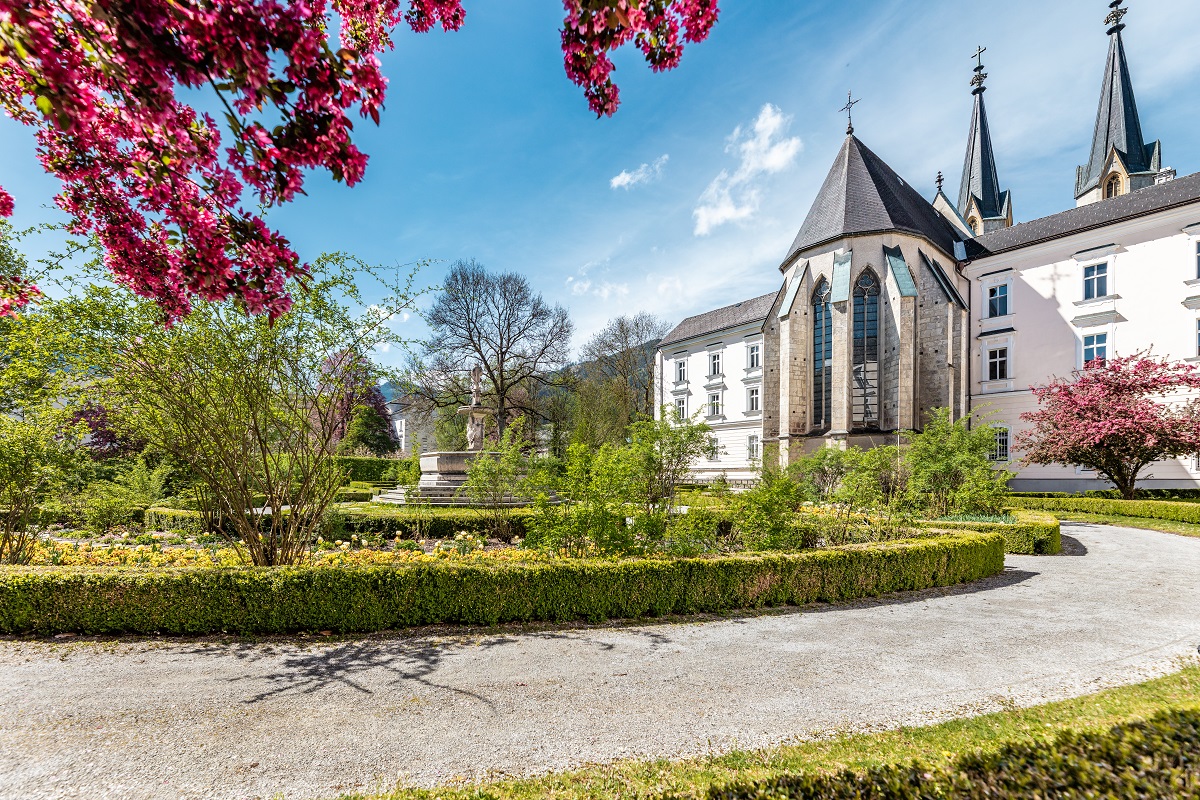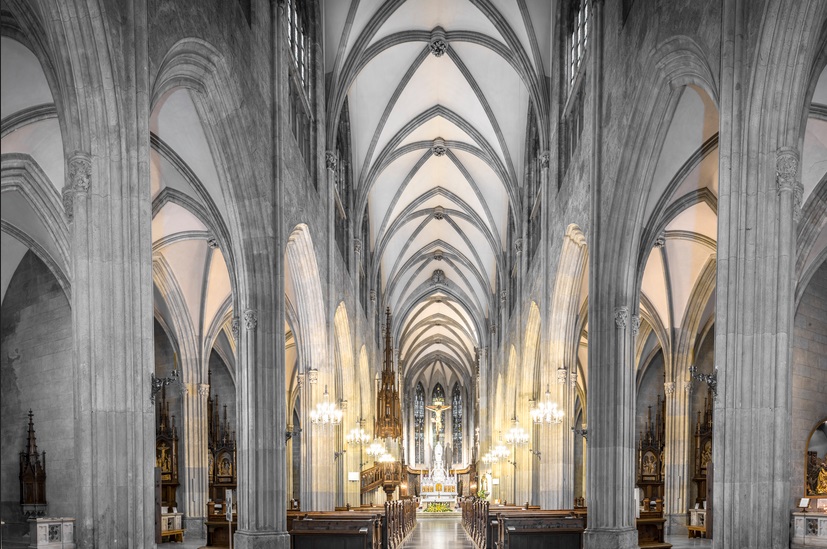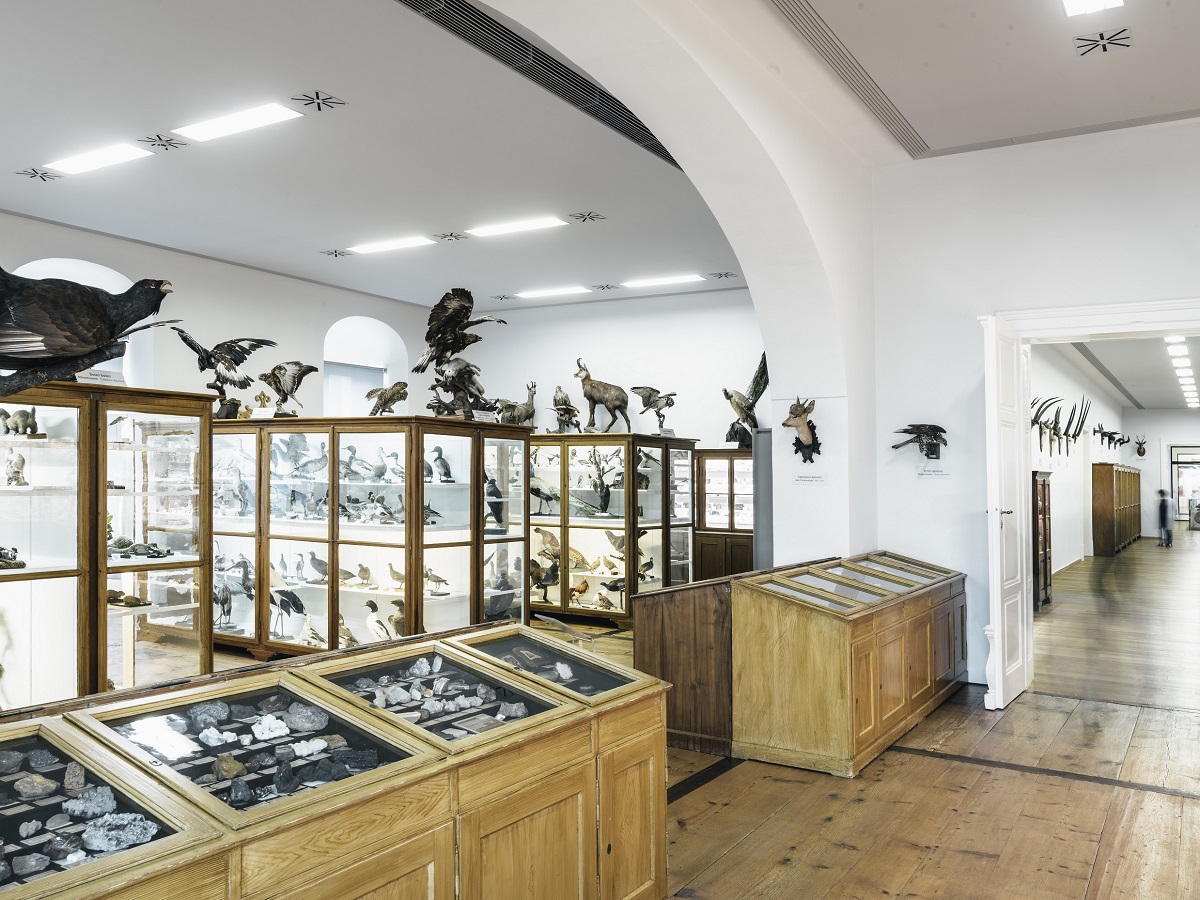
THE PLACE TO EXPLORE
ADMONT BENEDICTINE MONASTERY
In the heart of Upper Styria, following the course of the River Enns, lies one of Austria’s most important monasteries: the Benedictine Abbey of Admont. It is the oldest monastery still in existence in Styria and has shaped and enriched the region through its eventful history.
Like Pichlarn Castle, it has existed since the 11th century and has developed into a special place of power over time. As the spiritual, cultural and economic center of Upper Styria, its significance extends far beyond the borders of the region.
An eventful millennium
Admont Abbey was founded in 1074 and was closely linked to Salzburg in its early days. It was founded by Archbishop Gebhard of Salzburg. It was settled by monks from St. Peter’s Abbey in the city of Salzburg.
In 1120, a nunnery was added to the Benedictine monastery, but this was dissolved during the Reformation. In 1644, a grammar school was founded, which still exists today.
In the 17th and 18th centuries, extensive renovation work was carried out in the Baroque style. This work culminated in the 1770s in the construction of the beautiful baroque library hall.
In 1865, a major fire destroyed large parts of the monastery complex, but completely spared the library hall. Reconstruction of the monastery in the neo-Gothic style began immediately.


The baroque monastery library
The library hall is a masterpiece of Baroque architecture. Its dimensions (70 m high, 14 m wide and up to 12 m high) make it the largest monastic library hall in the world. It was built by the Viennese architect Josef Hueber, who modeled the building on the magnificent hall of the National Library in Vienna.
The seven domes of the library hall are decorated with frescoes by the painter Bartolomeo Altomonte. The themes depicted in the frescoes show the connection between religion, the arts and sciences.
Numerous special features make the library hall of Admont Abbey stand out from others of the 18th century. 48 windows provide a light-flooded room, the brightness of which is enhanced by the white bookshelves decorated with gold.
The library of Admont Abbey contains around 200,000 volumes and 1400 manuscripts from the 8th century onwards. From the 12th century onwards, the monastery had its own scriptorium (writing school) from which excellent manuscripts were produced.
A great variety
In 2003, Admont Abbey opened a large museum. It contains an extensive natural science collection and a valuable Gothic art collection as well as contemporary art and special exhibitions.
The abbey church is also worth a visit. Completely destroyed in the fire of 1865, it was rebuilt on the Romanesque and Gothic foundations and consecrated in 1869. This makes it one of the first large neo-Gothic sacred buildings in Austria.
The outdoor facilities are also not to be missed. A herb garden, a panoramic staircase with a viewing platform and a literary trail can be visited. The literature trail is part of a Styrian project that deals with eight valuable medieval texts at various locations.


What else you should know
The monastery is expected to open its doors to visitors this year on April 25, 2021, when the museums and library will once again be open daily from 10 a.m. to 5 p.m.
Admont Abbey offers numerous activities especially for families, guided tours and more. Admission to the museums and the library is € 12.50 per adult. Twice a day, at 11.00 and 14.00, there is a free guided tour of the library.
From the IMLAUER Hotel Schloss Pichlarn you need about 35-40 minutes by car to reach Admont Abbey. Alternatively, you can plan your journey by bike along the Enns cycle path. You will need to allow approx. 2 hours per trip (37 km each).